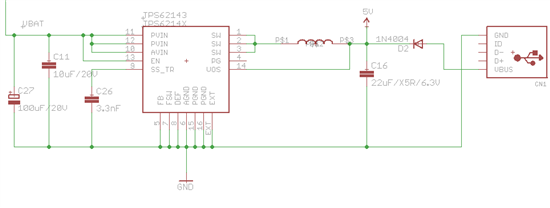Hello,
I would like to use the TPS62112 in my new design. The user is offered 2 options to power the module:
- Using 12V which is converted to 5V using the TPS62112
- Using 5V directly on another input
How will the TPS6211 react when 5V is supplied directly to it's output pin (or the inductor), and the input is not used?
Thanks!


